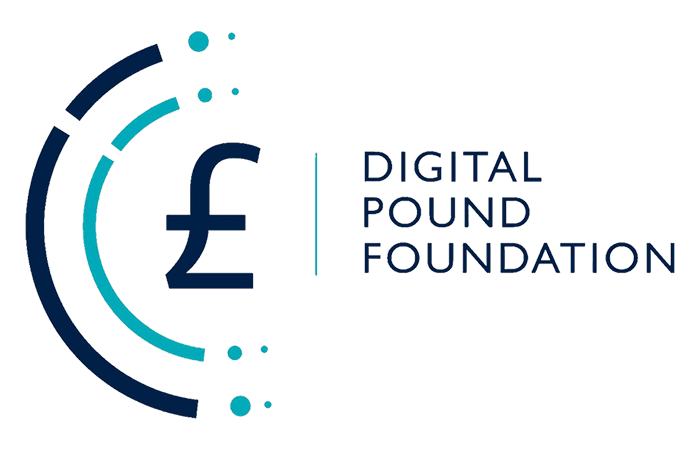Source: Global Government Fintech
A UK retail central bank digital currency (CBDC) has a seven out of 10 chance and ‘maybe higher’ of becoming a reality, in the personal view of a Bank of England (BoE) deputy governor.
Sir Jon Cunliffe quoted the odds, which he emphasised were his private thoughts, to a parliamentary committee this week in a meeting taking place less than a month after UK authorities issued their long-awaited consultation paper to inform their approach to a potential digital pound – dubbed ‘Britcoin’ in a tweet by then-chancellor (now prime minister) Rishi Sunak in April 2021.
The House of Commons Treasury select committee invited Cunliffe to appear before them as part of MPs’ inquiry into the crypto-asset industry. The bulk of the session, which ran for just under two hours on 28 February, saw Cunliffe and two central bank colleagues quizzed about a potential digital pound’s purpose.
The consultation stated that a UK CBDC is ‘likely to be needed in the future’ but the committee’s chair, Harriett Baldwin MP, described the paper’s tone as “somewhat ambivalent”. Cunliffe responded that the statement that it was ‘likely to be needed’ was “quite forward-leaning compared with where we were before”, and that the authorities have “kind of moved on the probability spectrum from ‘it may or may not’ to thinking ‘it’s more likely than not’.”
Pushed for his view on the likelihood on a scale of one to 10 that the UK would ‘need to have’ a CBDC, Cunliffe responded with “more than five”. But later on during the session he was re-asked the question and responded with “I think we are in the sevens – and maybe higher”. As the committee chair sought clarity that his view was “officially ‘just above five’ and, privately, seven”, Cunliffe responded: “Privately, but these are judgments. This is about judging the future and people have very different views. Some people would put it at three. That is why we should not take a decision now on the basis of that sort of forecast.”
CBDC must be ‘resilient, fraud-proof and secure’
“Our difficulty with this [preparing for potential CBDC] is that if we wait until it is nine out of 10, we are five years away [from a CBDC going live] at least,” Cunliffe told the committee in the opening exchanges. “These are big projects. It may be that in the crypto world you can run up a payment system very quickly, but this [a CBDC] would be a very serious thing that would have to be resilient, fraud-proof and secure. If we wait until we can say, ‘Okay, now we think it is needed’, we would be five years behind.”
The committee’s chair described UK authorities’ CBDC progress as “arguably very slow so far”, asserting that “quite a lot of time” had been “lost getting to where we are now.”
“We have tried to make where we are going commensurate with the trends that have been appearing,” Cunliffe – who is one of four deputy governors at the BoE but the one most closely associated with CBDC – responded. “Some countries have moved faster, some more slowly. In terms of advanced economies, I do not think we are behind in where we are on this. The next stage of work we are committing to do will actually reduce the time to implement, but without getting to the point where we have to pull the trigger and say: ‘Let’s go ahead’. You could look at this as a way of retaining optionality against something we think is probable but do not know is certain.”
One of the committee members, Anthony Browne MP, was uncertain about the need for a CBDC, describing the UK as having “one of the most advanced — arguably the most advanced — payment system in the world for making instantaneous payments”. Cunliffe responded to say he was “not sure” about that. “I have just come back from India,” he said. “There is a lot happening in India and emerging market economies that have gone much further. You can’t, by the way, use peer-to-peer payments in [UK] shops as you can in other countries. We have a system that meets today’s needs. Whether it is one of the most advanced in the world we could talk about.”
Browne, a former journalist who was chief executive of the British Bankers’ Association (now UKFinance) before being elected to parliament, reasserted that he saw no specific problem “at the moment for a CBDC to try to solve”, leaving Cunliffe to emphasise that “this is a forward-looking assessment.”
‘Opening a new frontier’
Browne asked for examples of specific benefits that a CBDC could bring to the committee members’ constituents.
“We ran a number of consultations with consumers, and the like, so I can give you some examples, which I will do in a moment, but maybe first I can give you a comparison,” said Cunliffe. “The iPhone launched with 15 apps, and those apps were things that you could do already: a camera, email, a calendar, the iPod (music). By the time they launched the App Store a year or two later, they had 8,000 apps (and I think now there are several million). This is not about ‘here is a particular thing we think needs to be done’. It is about opening a new frontier for people to improve payments and the way money is used in how we transact.”
He went on to discuss micropayments, automated delivery-versus-payment systems and allowing users to ‘programme’ money.
Other questions during the session looked at topics including the ‘initial’ limit proposed (in a CBDC speech by Cunliffe last month) of between £10,000 and £20,000 that an individual or business could hold in CBDC; and offline access to a CBDC, which was described as “a real technological challenge”.
The potential benefit to financial inclusion was also examined. Cunliffe said this was “not a primary motivation because in the UK we have opened up access to the banking system” through ‘basic bank accounts’. But he said that ‘tiered’ digital wallets in which the lowest tiers – “if you are not going to hold a large balance and money is always coming from one source of income” – could have fewer compliance checks. “They have done that already in some of the CBDCs that have been experimented with,” he said (the Bahamas CBDC is one such example). “That might make it easier for people to just open a wallet, whereas opening a bank account—even a basic bank account—requires quite a lot of information and compliance, which people find difficult.”
Most of the discussion focused on retail CBDC. Cunliffe agreed with one committee member who described a wholesale CBDC as “100 per cent” certain to happen, with Cunliffe pointing out that this was “happening already”.
‘How I got to a reluctant seven…’
Further points of discussion raised during the committee session included the possibility that a CBDC could fail from an operational/technical standpoint – something that occurred during early 2022 when one of the world’s first live CBDCs, the Eastern Caribbean Central Bank’s DCash, suffered a ‘service interruption’ lasting almost two months.
“If we introduced one of these and it failed, the impact would be very large,” Cunliffe said. “But if we do not introduce it and it happens in the private sector and fails, the impact is also very large, so one also has to keep the counterfactual in mind. My own view is – this is how I got to a reluctant seven [out of 10] – that these technologies will not go away simply because we do not use a CBDC.”
A UK House of Lords economic affairs committee report, ‘Central bank digital currencies: a solution in search of a problem?’, published at the start of 2022 concluded that there was ‘no convincing case’ for a digital pound. The report’s downbeat title was also the title of a speech delivered in August 2021 by the US Federal Reserve System’s Chris Waller.
The 116-page ‘The digital pound: a new form of money for households and businesses?’ consultation paper sets out elements of the UK authorities’ proposed CBDC design and revealed that a ‘design phase’ will run until 2025. A decision about whether to implement a digital pound is likely to be taken ‘around the middle of the decade’ and will ‘largely be based on future developments in money and payments’. A ‘build phase’ – including live pilot tests – would begin in 2025 at the earliest. The earliest launch timing, should the lights turn from amber to green, is likely be the latter half of the 2025-2029 period.
The BoE also published a technology working paper on 7 February setting out ‘cutting-edge technology considerations informing the potential build of a digital pound’.
























































